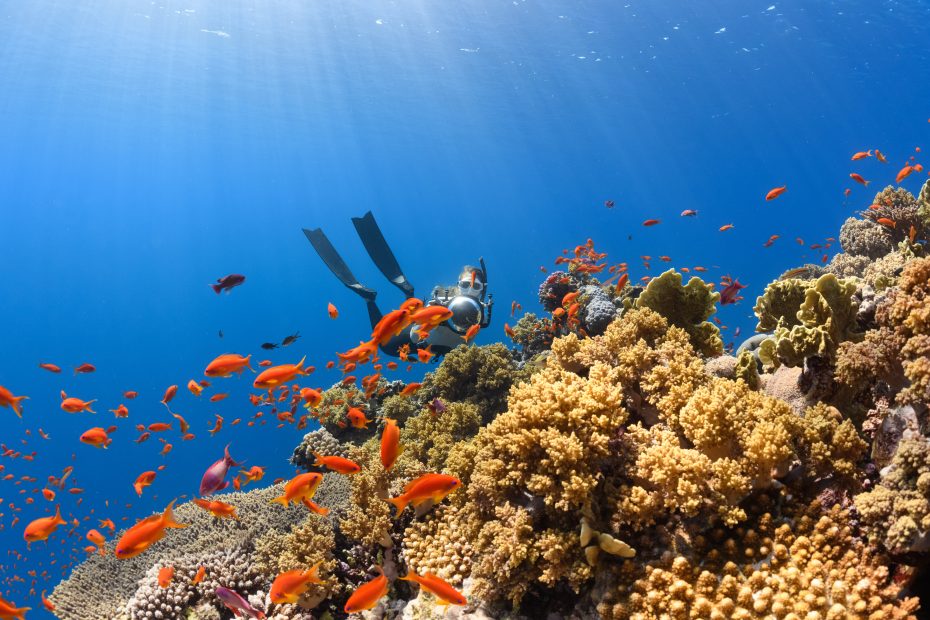Table of Contents
Introduction
Tuvalu is a tiny island nation in the South Pacific, halfway between Hawaii and Australia. Though it covers just 26 square kilometers of land, its territorial waters span over 900,000 square kilometers of ocean. Underneath these bright blue waters lies Tuvalu’s greatest treasure – its vibrant coral reefs.
Coral reefs fringe all nine of Tuvalu’s small atolls, creating stunning underwater oases. Though the reefs only cover about 2% of Tuvalu’s maritime territory, they contain an incredible diversity of marine life. From swaying sea fans to technicolor fish, Tuvalu’s reefs offer incredible snorkeling and diving.
Main Attractions
Three key marine protected areas safeguard Tuvalu’s most vibrant reefs. These are top spots to experience the nation’s underwater wonders.
Funafuti Marine Conservation Area protects reefs around Funafuti Atoll, home to Tuvalu’s capital. Snorkelers can see schools of unicornfish, Moorish idols, and more. Scuba divers may spot larger marine life like manta rays, turtles, and sharks.
Vaitupu Marine Protected Area shields the southern atoll of Vaitupu. Drift dive along steep drop-offs lined with sea fans. Spot Napoleon wrasses and humphead wrasse as you explore the reef.
Nukufetau Marine Protected Area preserves reefs around Nukufetau Atoll in Tuvalu’s central chain. This area has an abundance of fish and healthy hard coral growth. Look for parrotfish, butterflyfish, and angelfish while snorkeling.
Snorkeling and Diving
Tuvalu offers world-class snorkeling and diving throughout its protected reefs. No experience is needed to snorkel, just grab a mask and fins and jump in! For scuba diving, beginners can take introductory dives while certified divers can join more advanced trips.
Some top snorkel spots include the reefs off Fongafale Islet, Funamanu Islet, and Amatuku Reserve. These areas have calm, clear waters perfect for free swimming over coral gardens.
For diving, highlights include Paradise Reef’s sea mounts and swim-throughs, Avalae Pass’ drift dives, and the wall dives off Vaitupu and Nukufetau. Divers may spot hawksbill turtles, reef sharks, giant clams over 1 meter wide, and schools of barracuda.
Conservation Efforts
Though Tuvalu’s reefs remain vibrant, threats like coral bleaching, pollution, and overfishing pressure the ecosystems. Establishing marine protected areas empowered local communities to manage their resources while protecting biodiversity.
MPAs help defend against illegal, unreported and unregulated fishing. They limit activities like dredging and dumping waste that degrade water quality. And they offer coral respite to recover from bleaching caused by warming waters.
Visiting Tuvalu’s reefs responsibly through MPAs directly aids conservation. But travelers can further assist by patronizing sustainable hotels, respecting rules, and avoiding touching or stepping on coral. Donating to groups like Conservation International and Coral Reef Alliance also helps fund critical protection and restoration projects.
Travel Tips
The best time to visit Tuvalu is May through October during the dry season when waters are calmest. Temperatures average about 30°C year-round so pack light, breathable clothing. Don’t forget a hat, sunglasses, swimsuit, snorkel gear, reef-safe sunscreen, and motion sickness medication for boat rides.
Stay in Funafuti to access Togo Reef and the marine conservation area. The classic Vaiaku Lagi Hotel offers hotel rooms or dorm-style lodging. Or check out local guesthouses for cultural immersion. Arrange boat tours, equipment rental, and diving through your accommodation.
Conclusion
Tuvalu’s vibrant coral reefs transport visitors to an underwater fairyland brimming with life. By snorkeling and diving responsibly within marine protected areas, travelers can glimpse Tuvalu’s incredible biodiversity while contributing to conservation. As climate change and other threats endanger delicate coral environments worldwide, sustainable ecotourism helps ensure these exceptional ecosystems survive for generations to come. Don’t miss your chance to venture into Tuvalu’s underwater paradise!
FAQs
What types of coral make up Tuvalu’s reefs?
Tuvalu’s reefs contain over 100 species of hard and soft coral. Common types include brain corals, table corals, and fan corals.
What is the best way to get around Tuvalu?
Tuvalu’s small outer islands are best explored on foot. Boats and flights connect the islands. Funafuti Atoll has roads, taxis, buses and motorbike rentals.
Do I need a visa to visit Tuvalu?
Citizens of many countries, including the US, UK, EU, Australia and New Zealand can visit Tuvalu visa-free for up to 1 month.
When is the best time of day to snorkel?
Early morning offers the calmest water and best visibility. Late afternoon is also ideal once the sun lessens.
What is the language in Tuvalu?
The official language is Tuvaluan but English is also widely spoken. Learn a few Tuvaluan phrases to connect with locals.
